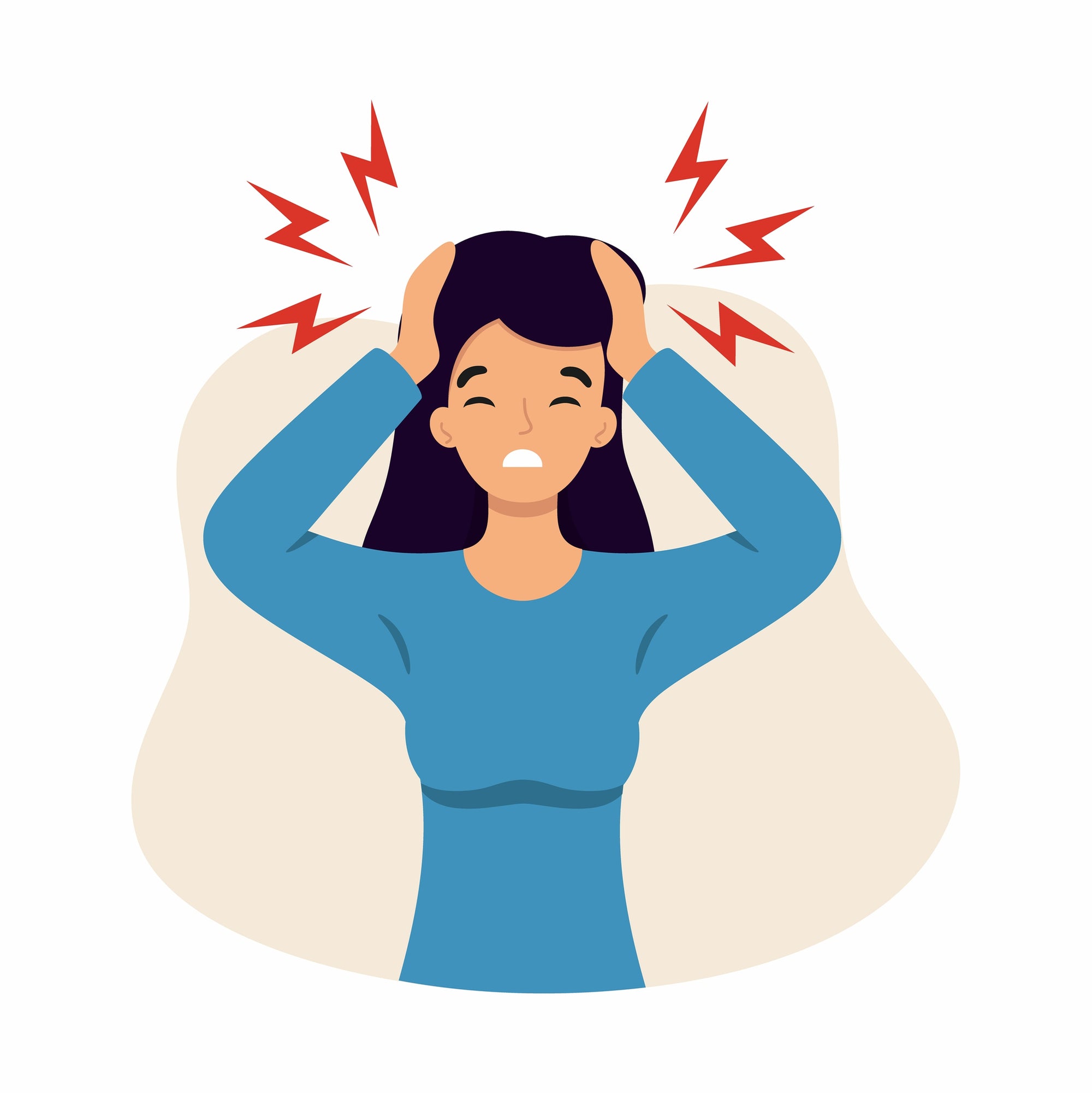
What are migraines and why do they occur?
Migraines occur when the blood vessels in the brain dilate, causing irritation to the trigeminal nerve, which in turn causes inflammation and pain.
Migraines can occur when stress is suddenly reduced, causing a relaxation of the blood vessels in the cranium. Hence, after a week of work, a migraine can often occur over the weekend. However, there are many potential causes of migraines, including too much or too little sleep, hormonal changes (in women), an empty stomach, fatigue, or even stimulation from strong light or darkness. Tension headaches, on the other hand, occur as a result of muscle tension in the temples or sides of the head, or in the muscles of the neck or shoulders. These headaches are usually caused by emotional or physical stress and are particularly common in people who spend long hours working at a computer. These types of headaches, as well as migraines, can also occur among those who are depressed or suffering from psychological disorders.
For migraines, there are various pressure points that are effective in relieving pain on the sides, front and top of the head.
Forearm Pressure Point
About three fingers width down from the crook of the elbow on the forearm muscle is a pressure point effective for relieving pain in the shoulders, and from poor sleep positioning.
Forefinger and Thumb Metacarpal Pressure Point
This pressure point is found in between the forefinger and thumb, between the bones and somewhat closer to the forefinger. Pressure on this “panacea” nerve point is said to relieve headache pain, menstrual discomfort, toothache and stiff shoulders.
Outer Achilles Ankle Pressure Point
This pressure point is found in the hollow between the Achilles tendon and the ankle bone on the outside of the ankle. Pressure on this point is said to relieve dizziness, nausea, lower back pain and swelling in the legs.
Fourth Metatarsal Pressure Point
This point is found between the metatarsal bones of the fourth and small toes. Pressure applied here is said to relieve neck and shoulder pain, and to remedy irregular menstruation.
Occipital Nerve Pressure Points
These two points are found below the base of the skull. Look up and move the fingers up the spine until they stop, adjusting to a point midway
between the neckbone and ears. Pressure here is effective in relieving headaches, neck and shoulder pain, stuffy nose
and hot flashes.
Upper Trapezius Pressure Points
These points are found about the middle of the back of the neck, in the hollows on either side of the large tendons. Pressure on these points is said to reduce eye fatigue and swelling in the face.
Mastoid Process Pressure
Points
Located just behind the below the protruding bones behind the base of the ears, these pressure points are effective in reducing tension in the neck, facial swelling and dizziness.
Shoulder Top Pressure Points
Located at about the middle
of the top of the shoulders, where the base of the neck and shoulder muscles meet, this pressure point is used to alleviate shoulder stiffness.
